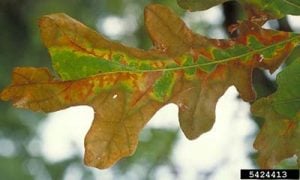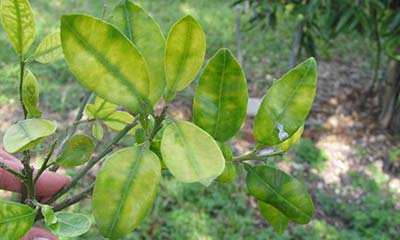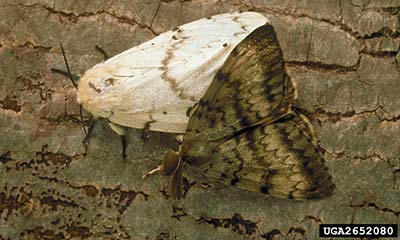The National Priority Plant Pests list includes a range of exotic plant pests and diseases that pose the most significant threat on a national scale. Some of these are of great importance to botanic gardens.
Although they are not the only plant pests of biosecurity concern, the National Priority Plant Pests list highlights the sorts of threats Australia faces and guides government investment and action.
Plant Health Committee, Australia’s national committee for plant biosecurity recently reviewed the list which includes pests that are exotic to Australia, under eradication or have limited distribution. The list was identified by comparing the possible ways that pests can enter Australia, the likelihood of them entering, their ability to become established and spread, and the consequences for businesses, human health and the environment if they do.
The top three pests or pest groups on the list are xylella and exotic vectors, Khapra beetle and spotted wing drosophila. View the full National Plant Priority Pests (2019) list here.
Pests important to botanic gardens
Some of the pests in the National Priority Plant Pests list are of great importance in botanic gardens. We have highlighted five of these below.

Australia’s number 1 National Priority Plant Pest is xylella fastidiosa, Image: John Hartman, University of Kentucky, Bugwood.org
Xylella and exotic vectors
Xylella is an invasive bacterial plant pathogen that causes significant environmental and economic impacts. Many commercial and ornamental plant species can be killed by this bacterial pathogen.

Symptoms of huanglongbing on leaves. Image: Jeffrey W. Lotz, Florida Department of Agriculture and Consumer Services, Bugwood.org
‘Candidatus Liberibacter asiaticus’ (and other strains) complex
Huanglongbing (yellow dragon disease), previously known as citrus greening disease, is one of the worst diseases of citrus trees worldwide. It is caused by the bacterial disease Candidatus Liberibacter asiaticus which spreads through the tree canopy, causing decline and then death of the tree.

Adult male (bottom) and female (top) gypsy moths. Image: USDA APHIS PPQ Archive, Bugwood.org
Gypsy moths
There are two main types of gypsy moth (Lymantria dispar): the Asian gypsy moth (L. dispar asiatica) and the European gypsy moth (L. dispar dispar). Gypsy moths are eat an extremely wide range of plants and are known to grow to adulthood on more than 650 species of plants from at least 24 families, including forest, orchard and ornamental trees. This host range includes both Eucalypts and Pines.

An adult brown marmorated stink bug. Image: Mohammed El Damir, Bugwood.org
Brown marmorated stink bug
Brown marmorated stink bug (Halyomorpha halys) is a mottled brown colour and shield shaped. It is a voracious feeder, affecting about 300 known plants including nuts, fruit, vegetables and ornamentals. While feeding the bug’s saliva causes significant damage to plant tissues.

Symptoms of eucalyptus rust on Malaysian apple leaves. Image: Dr Silvaldo F. Silveira UENF, PaDIL
Guava (eucalyptus) rust (exotic strains)
Guava rust also known as eucalyptus rust is part of the Puccinia psidii species complex. It is considered to be one of the most serious threats to Australia’s eucalypt plantations, commercial native forests and natural ecosystems. The disease is caused by the fungus Puccinia psidii sensu lato which infects plants belonging to the Myrtaceae plant family.
If you see anything unusual, call the Exotic Plant Pest Hotline (1800 084 881).
